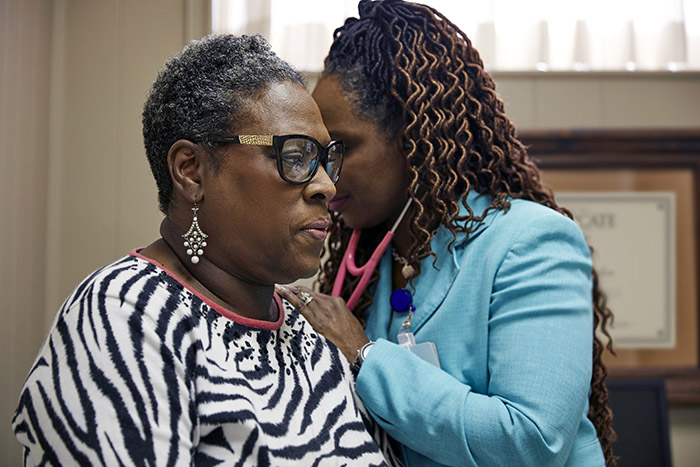Clinical Trial Diversity
The lack of diversity in clinical trials has been recognized as a major impediment to healthcare equality for decades. Unfortunately, attempts to increase participation among underserved groups have not adequately altered the makeup of clinical trial populations to make them representative of the populations most likely to benefit from the interventions under investigation.

Multiple myeloma provides one clear example. In the United States, African Americans are twice as likely as their white counterparts to develop the disease and make up 20% of all those living in the U.S. with multiple myeloma. Nonetheless, as of 2019, they accounted for only 6 percent of people included in relevant clinical trials.
Accumulating evidence is providing clues on how to effectively improve clinical trial diversity
Healthcare experts have made significant strides in broadening awareness of critical challenges to healthcare equality. With this awareness, we are now equipped to shift from communication of challenges to actioning solutions in order to address the challenges.
At the end of 2020, the U.S. Food and Drug Administration (FDA) issued new guidance on how to overcome barriers to clinical trial diversity. Around the same time, the American Society of Clinical Oncology (ASCO) published research findings on the mechanisms by which U.S. cancer centers can increase racial minority inclusion in clinical trials. The oncology community is thus arguably more prepared than ever before to begin deploying strategies to ensure that participants in clinical trials match those who carry the burden of disease.
A multi-faceted approach is key to addressing disparities and increasing clinical trial participation among underserved minority populations
While in recent decades the FDA has emphasized broadening eligibility criteria, real-world data has now helped us to appreciate that improving clinical trial diversity requires something other than simply allowing more people to participate; it also depends on successfully enrolling different populations into clinical trials and eliminating barriers to access. As the ASCO data highlights, enrollment efforts can be improved by engaging providers – who are the most important influencers for patient enrollment – and by building trust in clinical research within our communities. In addition, ensuring infrastructure is in place to support the conduct of clinical trials in centers caring for diverse populations while addressing patient financial barriers are critical factors for eliminating the obstacles to clinical trial participation among minority populations.

At Janssen, we are combining evidence-based solutions with governance and funding to enhance minority participation in our clinical trials and thus our ability to improve health outcomes. What began as discussions around identifying relevant barriers and brainstorming potential solutions has transformed into an actionable road map that will allow us to strategically address several potentially problematic elements of clinical trial enrollment. Through an initial pilot involving eleven oncology trials, we are providing the governance and funding necessary to bring these solutions to life.
Our team is implementing targeted solutions to tackle specific challenges in clinical trial enrollment
Our pilot study teams, have been trained on how to create a diversity plan. The diversity plan incorporates comprehensive toolkit solutions customized for each study and patient population. The study teams are supported by committees focused on addressing the challenges that sites, investigators, and patients face in clinical trial enrollment and participation. In addition, there is an internal team focused on creating internal infrastructure to ensure the solutions are embedded in every day working. This is all backed by a strong emphasis on using data and analytics to underpin solutions. Our strategy includes:
- Increasing access and enrollment of minority patients. The Patient Committee is charged with mitigating barriers to minority participation in clinical trials by making participation less burdensome, both practically and financially. These efforts include finding creative ways to overcome barriers and access to study participation. These include reducing the frequency with which patients are required to visit test centers to participate in trials and developing strategies for covering and reimbursing costs associated with trial participation.
- Working with new centers and maximizing recruitment of existing centers. To improve our ability to include minority patients, the Site Committee is engaging new investigative sites that serve these patients. The Sites committee is also strengthening our relationships with existing partnerships to increase capability at centers with whom we already work. In addition to supporting sites operational and infrastructure needs, the Site Committee also provides sites training on how to increase minority participation in clinical trials.
- Enhancing our Investigator Reach. The Investigator Committee collaborates with investigators at sites – new and old – that serve minority populations to ensure that researchers successfully capitalize on opportunities to enroll these patients in relevant trials. This committee is partnering closely with minority hematology/oncology investigators to support their clinical research needs and improve recruitment of those who may be more culturally aligned with minority investigators.
- Developing internal infrastructure and guidance documents. The Internal team is creating internal processes, systems and mechanisms to set teams up for success and ultimately, to ensure solutions are embedded. The Internal committee’s key focus is on creating an actionable toolkit for study teams to use to increase diversity in our trials.
New insights will enable broader application of programs to increase clinical trial diversity
Our goal is to expand our solutions for overcoming barriers to clinical trial diversity across our oncology programs and beyond. As we capture insights from our pilot, we will be able to refine and customize our strategies and continue to make incremental progress toward more inclusive clinical research. Eventually, the strategies and resources that we find effective for ensuring appropriate diversity in clinical trials will be woven into our approach for all trial design and considered an integral part of the way we recruit for and conduct our clinical trial research.
We are committed to continuing to govern and fund the process so that eventually each of our trials includes a representative study population – one that mirrors the population affected by the relevant disease. It is only through this type of research that we can adequately promote health for all and overcome the health inequities that persist even in an age of unprecedented medical innovation.


